

Campaigns
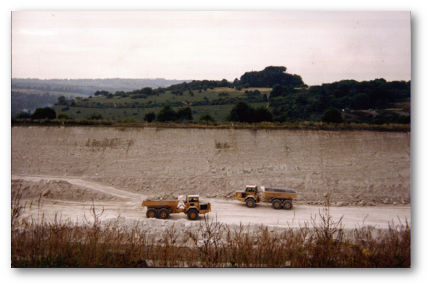
The M3 motorway through Twyford Down, which I photographed here just before its completion in 1994, brutally destroyed the ancient landscape setting of St Catherine's Hill in Winchester. I was angered beyond belief watching this, and (if I remember correctly) it was artist-activist Jai Redman doing a Bob Geldof ("get off your **** and do something") who finally propelled me into action.
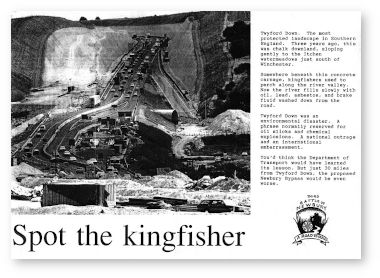
The 'Spot the Kingfisher' leaflet I wrote for Newbury in Autumn 1994. We photocopied thousands and thousands of these and handed them out all over the country. All that shameful training to be an advertising copywriter did, eventually, pay off. The little logo in the corner was the work of the wonderful Jill Eisele.
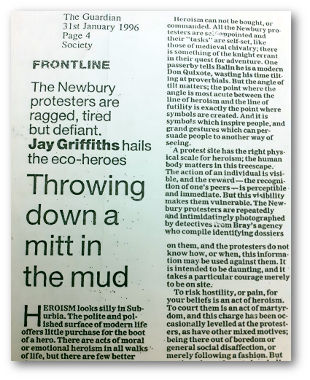
Jay Griffiths found Newbury "heroic", but to me it was too "full-on" exhausting to be anything of the kind.
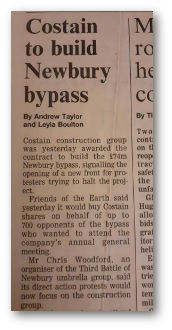
Taking the case to the city. The Newbury protest focused on bankrupting the Costain construction company in summer 1996—and almost succeeded. When hundreds of us bought single shares to attend the Costain AGM, the company was dismissive. But as Costain's fortunes fell, Mark McCaig had the last laugh: "A wise investor," he noted, "holds only one share."
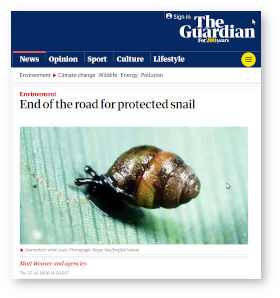
The Newbury Snail: When I began a dogged series of Freedom of Information requests to English Nature in 1995, I had no idea I was laying the ground for a spectacular High Court case the following year. Thanks to Friends of the Earth's intrepid press officer, Neil Verlander, and its barrister, Peter Roderick, Vertigo moulinsiana (the "Desmoulin's whorl snail") found itself world famous. As The Guardian reported in this 2006 piece, the "transplanted" snails died out after 10 years, much as we'd predicted.
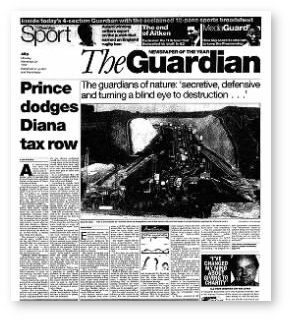
"The guardians of nature: 'secretive, defensive and turning a blind eye to destruction'". Peter Marren (now better known as a wildlife author) subsequently used the English Nature correspondence as a case study for his controversial WWF report, "A Muzzled Watchdog" (p.20), which John Vidal featured as a front page story in The Guardian on 24 November 1997
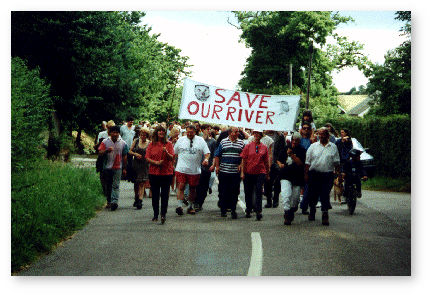
Sleeping by the river. The Teigngrace walk, 1997. These lovely Devon villagers didn't want their homes turned into a clay quarry—and nor did we. Together, as the clay company WBB discovered to their cost, we were magically unstoppable.
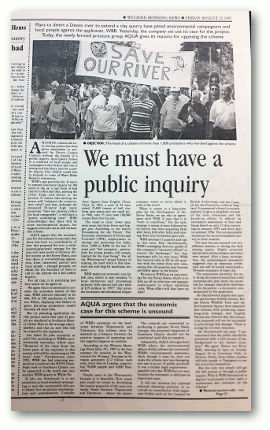
At Teigngrace, a clay company—who thought they could push a quarry through on the nod—were surprised to find the dirty people who slept by the river were formidable opponents. I made the campaign's case for a public inquiry in this Western Morning News article, 1997.
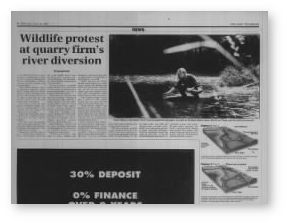
To get national press coverage, we had to draw correspondents all the way from London to Devon—but even Charles Clover of The Telegraph came down!
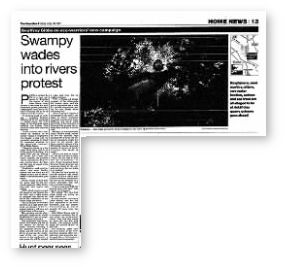
In 1997, "Is Swampy there?" was the first question most journalists asked. Well he was indeed at Teigngrace, from time to time—and he called me out for looking too clean.
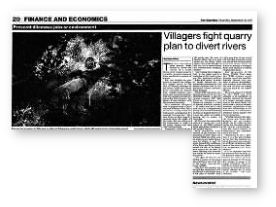
Ultimately, Teigngrace was a campaign by the villagers to save the village—and we were careful never to lose sight of that.
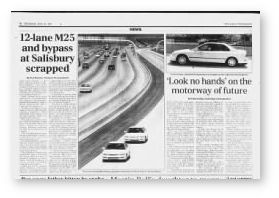
When the Labour government took power in 1997, the Salisbury bypass was an early casualty. All those late nights knocking on doors getting people to sign postcards opposing the road suddenly felt worthwhile.
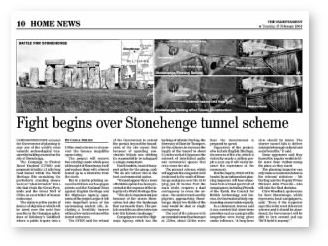
When I joined the Stonehenge campaign in 1999, I didn't imagine I would still be there in 2004 when yet another public inquiry opened. It took another three years to defeat that particular plan.
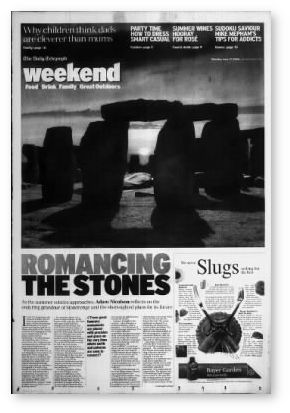
Articulate and influential voices joined our call to save Stonehenge. We helped Adam Nicolson prepare this thoughtful piece in the Telegraph in June 2006.
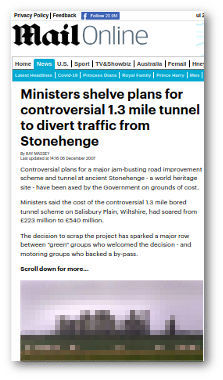
The Stonehenge tunnel—beaten in 2007, 2013, and again in 2021. The plan has nothing to do with making the A303 a better or safer road—and everything to do with strategically opening up a swathe of the south west for property development.
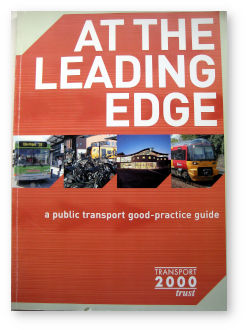
At The Leading Edge: It was a pleasure and a privilege to help Jonathan Bray put together his superb guide to best-practice in public transport back in 2003. Many of the visionary ideas he championed here are now commonplace.
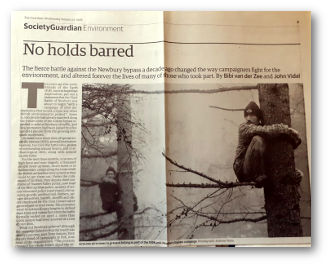
Ten years after Newbury, as this retrospective 2006 Guardian article explained, the full-on, highly surreal Newbury bypass campaign changed the lives of everyone involved—me included.
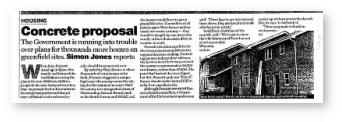
Concrete Proposal: In 1997, with roads in retreat, a few of us started to focus on greenfield housing and wider land-use issues. In this Guardian article, I casually inform British housebuilders that direct activists are taking growing interest in where they're slapping their concrete. By 2000, the government announces it will aim to build 60 percent of new developments on brownfield sites.
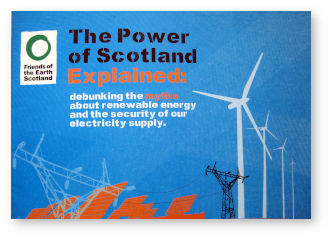
The Power of Scotland: In 2011, I helped Beth Stratford and Friends of the Earth put together this friendly little guide to how Scotland could be powered by renewable energy.
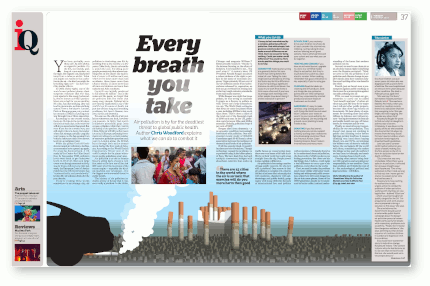
Every Breath You Take: iNews centrefold article, March 2021.
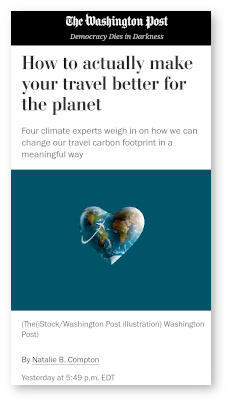
Is it possible to be an eco-friendly traveller? Interview with The Washington Post, September 2021.
Although I work as a writer, for the last three decades, I've "enjoyed" a parallel, part-time career as an environmental campaigner. I thought I'd quickly jot down a few memories...
According to an ancient news clipping from the Derby Evening Telegraph, I did my very first bit of campaigning on development issues way back in 1987. Doesn't time fly? But I was properly spurred into eco-action seven years later after watching the wholesale destruction of Twyford Down (in Winchester, where I was living), which I'd shamefully done nothing to stop. Sickened and angered, I happened to be walking through nearby Plague Pits Valley one evening in July 1994 when I came across a flyposted flyer with a phone number on it. This casual bit of happenstance would change my life.
Newbury
I decided to call the number and so made contact with the amazing Twyford campaigners, Becca, Tim, Phil, and Jai, who'd gone on to found a brilliantly effective group called Road Alert. Shortly afterward, I resolved that my penance was, first, to give away all my savings (anonymously) to the various major direct action campaigns happening at the time: Newbury, the A30 in Ottery St Mary, Stanworth Valley, and the M11; second, and more significantly, to become part of the team on the Newbury bypass campaign that summer. Fired up by George Monbiot making his infamous "mess of pottage" speech in a musty school hall, I spent the next three years with a remarkable group of people. Together, we turned a minor dispute over a local road into one of the defining environmental battles of the 20th century.
Three months or so of the campaign made world headlines in spring 1996, but, in reality, everything began long before that, and went on long after. I remember being called a "sad little ****" after proudly telling the weekly campaign meeting I had read the SACTRA report ("Trunk Roads and the Generation of Traffic, "a groundbreaking 1994 study into how roads increase traffic overall, rather than relieve it) from cover to cover. I remember night after night of doorstepping in the autumn and winter of 1994, collecting postcards of opposition from baffled Newbury locals, coming to their UPVC doors in their underpants with pit-bulls snapping at their heels. I remember writing lengthy letters to English Nature about all the wildlife they'd neglected to research on the bypass route. Long before Twitter, we made hundreds of mind-numbing phone calls to set up the emergency "phone tree" that could kick-start the direct-action campaign at a moment's notice. BBC News lapped up the tree-top acrobatics, but didn't report this sort of grunt and grind.
We stopped the Newbury bypass, briefly, in December 1994: I still remember Tim's frantic phone call breaking the news. But the road came back to bite us the following summer. And at that point, I gave up my very well paid job and, like hundreds of others, became a full-time, full-on campaigner. With no head for heights, I climbed a tree exactly once; fortunately, there was more to do at ground level. With Jo Carter and Dorothy Morley, twin engines of the early campaign, I put on a suit and Eurostarred to Brussels to lobby Ken Collins and other Brussels bigwigs in the European Parliament about potential breaches of European law; later, Jo and I were lobbying again at the '95 Labour Conference, watching the party mutate from Jimmy Knapp ("When are you coming back?") to Tony Blair right before our eyes. Jo did a vast amount of this kind of work behind the scenes, later launching the influential Cambus (businesses-against-the-bypass) campaign to counter the idea that Newbury's business people all supported the road, and producing The Battle of Rickety Bridge, a stereotype-busting film with Age Concern.
As 1996 opened, we were making front page headlines around the world: I remember welcoming a bus-load of protesters fresh from Belgium and a friendly, bespectacled photographer called "Tony" (who turned out to be Tony Olmos), taking incredibly evocative pics for The New York Times. I think we truly realized the enormity of Newbury when we received a congratulatory fax from the Ogoni People of Nigeria, who had themselves made world headlines following the execution of nine of their people, including the activist Ken Saro-Wiwa, a few months before. It was a proud moment—but a chilling one. In Newbury, we were derided as "eco-terrorists", but we got to make our point, loud and clear; in Nigeria, people like us were detained, tortured, and executed. And where was all that Nigerian-drilled oil heading? Maybe to power the very cars that would soon be chugging up and down the Newbury bypass.
At times, the Newbury campaign was highly surreal: endless lines, thousands and thousands of security guards in hard hats, dotted through the landscape like variously colored M&Ms... Julian Cope in a giant papier-mâché head... a phone call offering us a £100 donation or a pantomime cow (Cath and I, alone in the office, were in instant agreement: "We'll have the cow")... the ever-cheerful Les Pope rolling up in the office most days carrying tens of thousands of pounds in donations from our PO box... those letters I'd written to English Nature magically turning into the High Court case that propelled the tragic Newbury snail (Vertigo moulinsiana) to global fame... a broken office chair that became known as The Chairman, on which a face was painted and through which major campaign decisions were subsequently made... thinking I was vainly writing to Mohamed Al-Fayed late one afternoon (the way you do these ludicrous things in desperation) and getting a reply, and committed help from a world expert on water pollution, first thing the next morning, which ultimately led to Jo Carter's Newbury Monitoring Project... being stumped in a radio interview by Ben Bradshaw (then a reporter on Radio 4's The World This Weekend) when he asked me if I thought we could stop the road (because I knew, very well, that we couldn't)... bawling out the news editor of the Daily Mail for making up a story about "heroin and chicken soup" at the Snelsmore camp... chasing Deputy Chief Constable Ian Blair (later head of the Met, now Lord Blair) of Thames Valley Police through the snow with a film crew in tow, pretending to be an outraged taxpayer... taking a phone call from an idiot who said he was going to fire-bomb our camps but (in the manner of a true idiot) forgot to withhold his number (we called him back, thanked him politely for his call, and sent the police round)... falling into the river off Rickety Bridge, and discovering (in the "tat" pile) a far better pair of jeans than the ones I'd been wearing... meeting Tony Benn in thick fog and, a few hours later, watching a crane "barbecue"... and after all that, and very, very, much more, someone coming down from a tree with a blue, frostbitten face, throwing all my meager road-stopping efforts into sharp, pathetic relief.
And the landscape we'd lived and loved lost in burning pyres and choking smoke—a wasted snake of cleared forest that saved two minutes on a journey to nowhere. Everyone who was at Newbury has a mental attic packed and stacked with absurd memories; too many of mine involved 30-hour days in a smelly office followed by snatched hours of sleep. It was like life during wartime. It was life during wartime. All of us were changed. In astonishing ways.
As the chainsaw whine faded and the pyres of ancient woodland fizzled and smouldered, I moved to the campaign to stop a bypass around Salisbury from desecrating Constable's watermeadows (successful), and the fight to stop Devon's rivers Teign and Bovey being diverted for a giant clay quarry at Teigngrace (successful), about which the BBC kindly wrote: "Of the many environmental direct action campaigns of the 1990s, it remains one of the most notable victories".
Teigngrace
After Newbury's winter wasteland, Teigngrace was a joyous, truly golden campaign, powered by Emma and Simon's astonishingly effective double-act—sometimes Richard and Judy, sometimes Punch and Judy. It had its own moments of hilarity and some of us fell in the river at least once a day. It also brought home to me what an eco-oddity I'd become, just as at Newbury, straddling the divide, hovering, levitating, between the very conventional, very "straight" campaigners on the ground and the people in the heavenly trees high above.
Oliver Tickell was one of the journalists who came down to write about the campaign; I remembered how he'd got himself into big trouble writing a full-page Times article describing the Newbury bypass as a "fiasco". While writing his Teigngrace piece, he (hilariously and absurdly) introduced me to one of the clay company's supporters as an "eco warrior"; she immediately terminated the interview and threw us out of her posh garden. I was wearing a raggy Thomas Pink shirt at the time ("It's quite aristocratic that way", I remember Oliver commenting), but I stank of stale sweat and woodsmoke—and that was enough for her. Back at the protest, others found me equally unconvincing. I remember buying "Swampy" Dan (then in hiding from the media) a pint in Exeter's Cavern Club only to be told, with a suspicious smile, that I looked "very clean for someone who lives on site". It may well have been the same day.
And beyond
Then followed a variety of other housing, road, and landscape battles (variously played, won, lost, and drawn), a feeble tilt at nuclear power stations, a helping hand (or finger?) for the Dibden Bay port campaign, and, with Mark Stedman, a brief diversion into archaeology and development (with help from Richard Morris and the wonderful, and then little-known Jenny Jones) that sowed the seeds for the Save Stonehenge campaign a few years later. It was a bizarre period of what appear to have been 18-hour days when I held down a full-time job in London and traveled out to Newbury and Salisbury several evenings a week, culminating in the offer of a campaigning job with Friends of the Earth, which I turned down to focus on writing, when they declined to let me do both.
Stonehenge
In 1999, buoyed up by the Teigngrace victory, a few of the "veterans" from the campaign co-founded the UK Rivers Network to bring a more "spiky" attitude to pollution and freshwater conservation issues, though we were all pretty burnt out by then—and the project failed to gain much traction. It didn't help that our inaugural conference happened a few days after 9/11 and our keynote speaker couldn't fly over from the States. More successfully, from 1999 to 2007, I ran the Rivers Network's "Save Stonehenge" campaign, working alongside the Stonehenge Alliance to stop four lanes of ill-conceived motorway ploughing through the iconic World Heritage Site. The strategy was simple but effective: progressively pick off the road's supporters, by pressurizing people like the National Trust and English Heritage to switch sides, eventually leaving the government's road-builders isolated. It took almost a decade—but we won.
Stories
So... that's my parallel life, or the bit I can quickly remember. An amazing series of madcap adventures involving some incredibly inspiring people I was ever lucky indeed to have spent time with. I do little campaigning now—or less. These days, I concentrate more on long-term environmental education through the books and other things I write. I suppose I'm what Paul Kingsnorth would term "a recovering environmentalist".
Press
From the Newbury snail to the Stonehenge tunnel, here's something of a personal scrapbook of interviews, articles, and other memorable clippings from campaigns and issues I've worked on over the last three decades....
- How to actually make your travel better for the planet by Natalie B. Compton, The Washington Post, September 2021.
- Authors take the environmental movement to task by Eric Englada, NCR: Earthbeat, 11 April 2018. A new lease of life for my 1994 photo of the Twyford Down cutting, which (thanks to Wikimedia) pops up all over the place. Given how my campaigning story began, it's ironic (and it feels somewhat fraudulent) when that photo finds its way into stories like this: Twyford Down M3 protest: The 1990's Hampshire protest still influencing HS2 and roads campaigner groups.
- How can we reduce plastic in our beauty routine?, Women's Environmental Network, 2018.
- Stonehenge tunnel plans dropped, Western Daily Press, 1 January 2012, p.4.
- How the Environment Agency has spun the news on river quality by John Vidal, The Guardian, 30 August 2011.
- Chris Woodford talks to Plastic is Rubbish: Plasticisrubbish Blog, 1 October 2011.
- Stonehenge: so what now? by David Vallis, Salisbury Journal, 13 December 2007.
- Stonehenge tunnel 'too expensive to build' by Ben Webster, The Times, 7 December 2007.
- Government scraps Stonehenge tunnel plan by Matthew Weaver, The Guardian, 6 December 2007.
- Guardian Newdesk Podcast: Campaigner Chris Woodford of Save Stonehenge welcomes the government's decision today to scrap plans to build a 2.1km tunnel under the World Heritage Site because of spiraling costs by Jon Dennis, The Guardian, 6 December 2007.
- Stonehenge tunnel plans scrapped: BBC News, 6 December 2007.
- Stonehenge road tunnel scrapped by David Millward, Telegraph, 6 December 2007.
- Ministers shelve plans for controversial 1.3 mile tunnel to divert traffic from Stonehenge by Ray Massey, Daily Mail, 6 December 2007.
- How to tackle the rising tide of litter in filthy Britain by Chris Woodford, UK Rivers Network, Letter to The Guardian, 8 March 2007.
- Bypassing the road builders by Chris Woodford, Letter to The Times, 14 September 2006.
- A Monumental Mistake: Stonehenge: Western Daily Press, 24 January 2006.
- No holds barred by Bibi van der Zee and John Vidal, The Guardian, 11 January 2006.
- Stonewalled: Western Daily Press, 21 July 2005.
- "Controversial scheme to build a road tunnel under Stonehenge is under threat because of soaring costs", The Birmingham Post, 21 July 2005.
- Soaring costs threaten Stonehenge road tunnel, The Telegraph, 20 July 2005.
- Is stonehenge tunnel project turning into the next Bath Spa fiasco?: Western Daily Press, 25 June 2005.
- Stonehenge plan: 'Global outrage': Wiltshire County Publications, 10 November 2004.
- Deja vu as fog of argument engulfs Stonehenge tunnel inquiry by Maev Kennedy, The Guardian, 18 February 2004.
- Fight begins over Stonehenge tunnel scheme by Cahal Milmo, The Independent, 17 February 2004.
- Tempest brewing over Stonehenge tunnel plan, Globe & Mail (Toronto, Canada), 17 February 2004.
- Stones plan will help "blighted communities": Wiltshire Gazette and Herald, 12 June 2003.
- NGOs Tell World Bank to Reconsider Bujagali Dam, International Rivers Network, May 2002.
- Tunnel to protect Stonehenge but critics say it will not be enough by Maev Kennedy, The Guardian, 11 December 2002.
- The day the eco-warriors took to the trees: BBC News, 2002.
- Environmentalists Express Concern Regarding World Bank Resettlement Policy Draft by CIEL/International Rivers Network, 2001.
- Are cheap loos worth the loss of a river?—A quarry wants to divert a river by 400 yards for the clay below. Environmentalists are appalled by Mark Rowe, The Independent, 9 August 1998.
- Wildlife protest at quarry firm's river diversion by Charles Clover, The Telegraph, 20 July 1998, p.8.
- If only Swampy could help us now—Country Life by Brian Pedley, The Times, 4 July 1998.
- "The guardians of nature: 'secretive, defensive and turning a blind eye to destruction'" by John Vidal, The Guardian, 24 November 1997, p.1.
- Concrete Proposal by Simon Jones, The Guardian, 31 December 1997, pp.40–41.
- Eviction go-ahead at Devon quarry: The Independent, 30 August 1997.
- Villagers fight quarry plan to divert rivers: The Guardian, 25 September 1997, p.20.
- We must have a public inquiry by Chris Woodford, Western Morning News, 22 August 1997.
- Villagers welcome eco-troops in battle to shield otter and badger from quarry by Louise Jury, The Independent, 12 August 1997.
- Supporters dismayed as bypass plan is scrapped by Peter Foster, The Times, 29 July 1997.
- Labour axes bypass plan by Ken Gibson, The Sun, 29 July 1997.
- Swampy wades into rivers protest, The Guardian, 18 July 1997.
- High Court verdict on Newbury by-pass awaited: Independent, 20 June 1996.
- Home from home for Newbury snails by Oliver Tickell, New Scientist, 14 June 1996.
- Minister moves quickly to save bypass snail by Jonathan Prynn and Norman Hammond, The Times, 7 June 1996.
- Costain to build Newbury bypass by Andrew Taylor and Layla Boulton, The Financial Times, 7 June 1996.
- By-pass snail hitch by Nick Nuttall, The Times, 15 May 1996.
- True Grit at Newbury by Eldred Willey, The Tablet, 16 March 1996, p.383.
- Newbury Journal;Going Out On a Limb Over Plans For a Road by Sarah Lyall, The New York Times, 7 February 1996.
- Throwing down a mitt in the mud by Jay Griffiths, The Guardian, 31 January 1996.
- Battle of Newbury by Chris Woodford, Birdwatch, January 1995, p.65.
- VSO: They're doing a fine job: Derby Evening Telegraph, 20 March 1987, p.19. My first ever campaign!